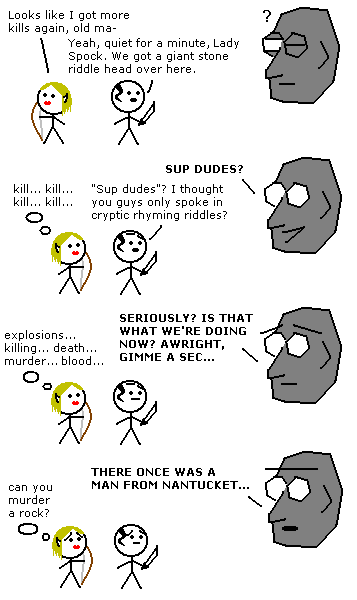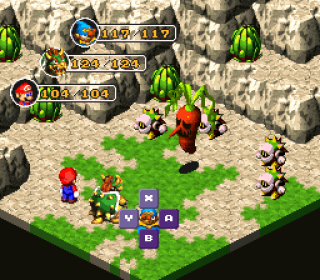Hey duders, this is a blog that I wrote and posted to the internet. I might just skip these introductions in the future.
We're all aware of and have varying levels of excitement for the resurgence of two major genres from our childhood that had since vanished (or retreated to the dark realms of the hardcore and foreign audiences): Graphic Adventure games and Fighter games. But what of the other niche genres that disappeared as times and attitudes and technology changed? Whenever the urge strikes, I'll be using this feature to highlight some nearly-forgotten type of game that I've noticed has made a comeback through the increasingly relevant channels of downloadable Indie games - created by developers who clearly fondly remember this shit as much as I do.
On this edition of Wise Fwom Your Gwave we're looking at Isometric Puzzle Platformers. Now, we're all familiar with the isometric viewpoint - that weirdly 45-degree-angled bird's eye view where "up" isn't up but actually diagonally up and right. Many games, such as Final Fantasy Tactics or Baldur's Gate or Diablo and plenty of others use this view as a stylistic choice. The true isometric puzzle platformer, a genre that really started with Q*Bert and Zaxxon but found its groove in classic C64 and Spectrum games like Knight Lore and Head-Over-Heels, depends on its slightly disorientating presentation to set up several jumping, item-placing and maze-orienteering puzzles to test players with their sheer difficulty. More examples: The Cadaver games attempted to meld this action-puzzle gameplay with a more traditional RPG, Solstice and Equinox make for a very accessible duo of NES/SNES adventures and Monster Max is a very densely packed series of puzzles for the original Game Boy.
Because the isometric format can be considered a form of "2 and a 1/2"D, a concept I'm not technically allowed to talk about due to Gerstmann's Law, it seemed like a sneaky way for designers and artists with too much integrity to create highly detailed sprite-based 2D worlds and characters while appeasing whatever marketing executives or focus groups that refuse to release anything with fewer dimensions than three. Of course, as 3D technology caught up to be as aesthetically pleasing as the older and wiser 2D format, the number of new releases that used the isometric view slowed to a trickle - including these platformer puzzler things. Which brings us to the present.
Moonpod's Mr. Robot (available on Steam) is a sci-fi themed puzzle platformer that uses the isometric format to depict a tiny robot attempting to rescue the stasis-kept humans from the hostile forces on board. Orbital Media's Scurge: Hive is a (very) derivative Metroid-esque adventure that is based around exploring non-linear isometric rooms and figuring out how to acquire keys and activate transporter nodes. Crystal Dynamics' surprisingly not awful Tomb Raider game - Lara Croft and the Guardian of Light - isn't quite isometric, but sets up its puzzles with a fixed 3D camera which creates a similar effect. It's starting to feel like this genre has a presence again, if only in small numbers so far. If Super Meat Boy is any indication, we're all eager for more super-tough nostalgia trips.
Bonus Comics
After reading (or skipping >:( ) all that waffle, it's time for more of this thing I do a lot now.

Scurge: Hive



Log in to comment